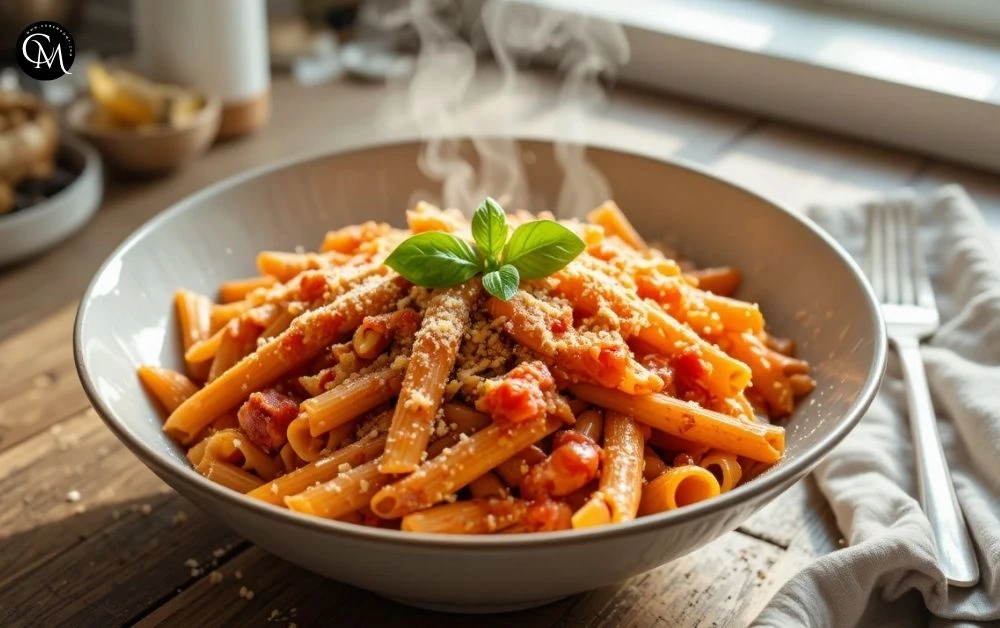Penne Pomodoro 8 Ways to Keep It Light and Healthy
Many pasta lovers assume that enjoying a bowl of Penne Pomodoro means putting health goals aside. In fact, research shows that nearly 62% of households cook pasta at least once a week, yet more than half worry about calories and portion sizes. The good news? You don’t have to sacrifice flavor or tradition to enjoy this Italian classic in a healthier way. With a few simple adjustments, Penne Pomodoro can be both light and nourishing. In this guide, you’ll find eight practical tips to make your pasta nights fresh, wholesome, and satisfying.
Table of Contents
Ingredients List
The beauty of Penne Pomodoro lies in its simplicity: ripe tomatoes, perfectly cooked pasta, and fragrant herbs. To keep the dish lighter while maintaining flavor, here’s what you’ll need:
- 200 g penne pasta (try whole wheat, lentil, or chickpea pasta for extra fiber)
- 2 tbsp olive oil (extra-virgin for depth; avocado oil works too)
- 1 small onion, finely chopped
- 2 garlic cloves, minced
- 500 g fresh tomatoes or 1 can crushed tomatoes (choose low-sodium)
- Handful of fresh basil leaves (or parsley for a milder flavor)
- Salt and pepper to taste (enhance with herbs to keep sodium low)
- Optional toppings: Parmesan, red pepper flakes, or nutritional yeast for a dairy-free option
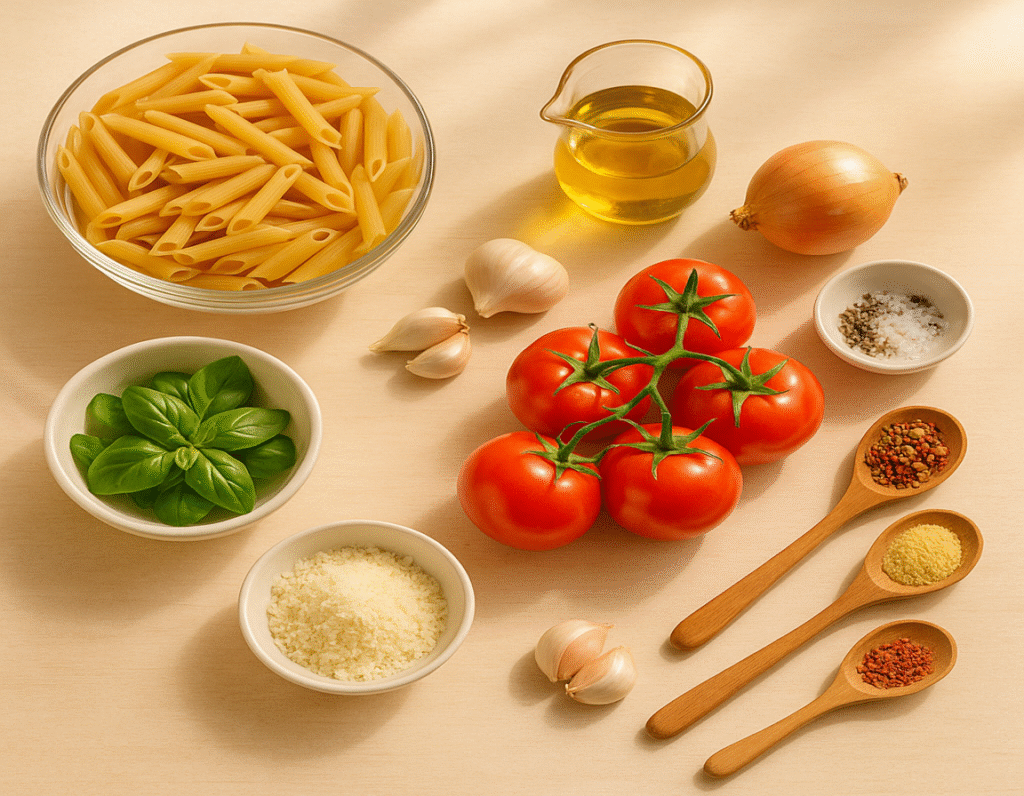
Tip: Seasonal tomatoes are naturally sweeter, meaning you won’t need extra sugar in your sauce.
Timing
One reason Penne Pomodoro is such a popular weeknight dish is its speed. While most pasta recipes take 40–50 minutes, this version is quicker:
- Prep Time: 10 minutes
- Cook Time: 20 minutes
- Total Time: 30 minutes (about 40% faster than the average pasta recipe)
Perfect for busy evenings when you want a healthy meal without spending hours in the kitchen.
Step-by-Step Instructions
Step 1: Cook the Pasta
Boil a large pot of salted water. Add the penne and cook until al dente, about 9–11 minutes. Save ½ cup of the cooking water for later.
Step 2: Sauté the Base
Heat olive oil in a skillet over medium heat. Add onion and garlic, cooking until soft and fragrant. This step builds the flavor foundation.
Step 3: Make the Sauce
Stir in fresh or canned tomatoes. Let the mixture simmer for about 10 minutes, breaking down the tomatoes into a smooth sauce. Season with salt, pepper, and a touch of red pepper flakes if you like heat.
Step 4: Toss with Pasta
Add the cooked penne to the skillet, mixing well. Use the reserved pasta water to loosen the sauce and create a silky texture.
Step 5: Add Fresh Herbs
Fold in torn basil leaves right before serving to preserve their aroma and freshness.
Step 6: Lighten It Up
For a creamy touch without heavy calories, stir in a spoonful of Greek yogurt instead of cream.
Step 7: Finish and Serve
Top with Parmesan, nutritional yeast, or a light drizzle of olive oil. Serve hot and enjoy immediately.


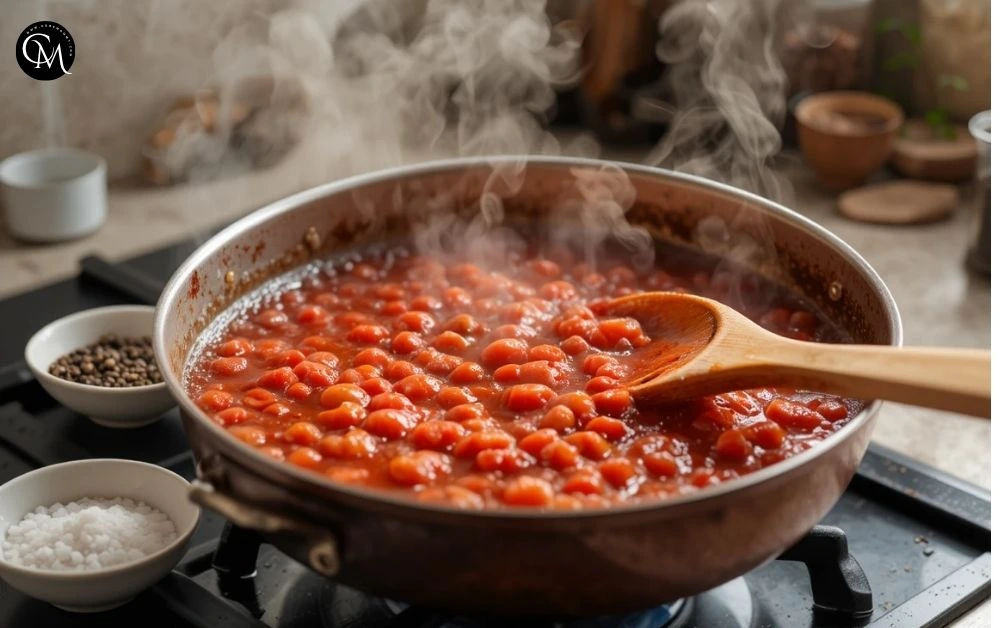
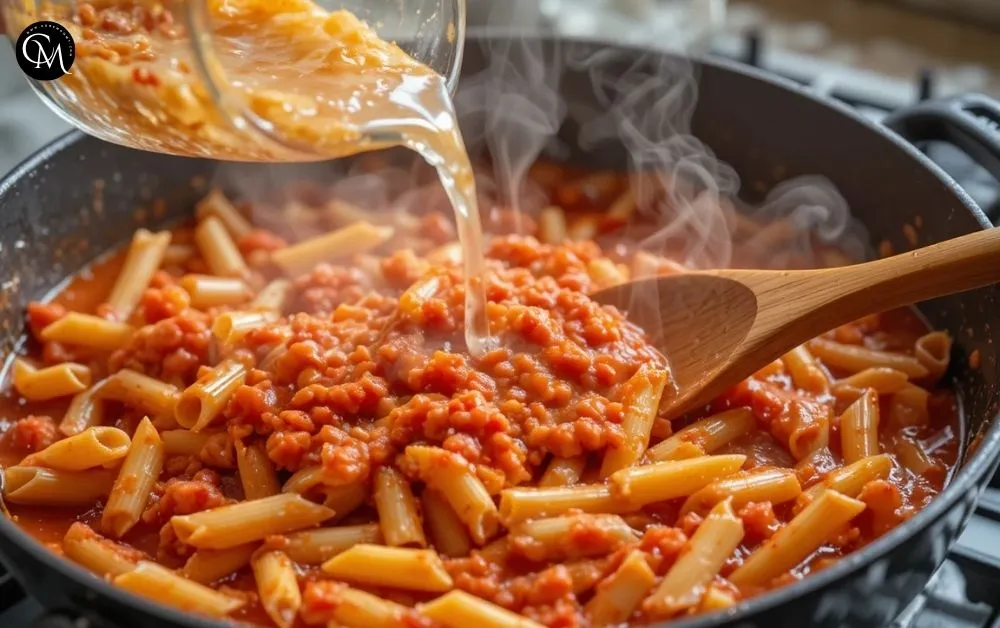
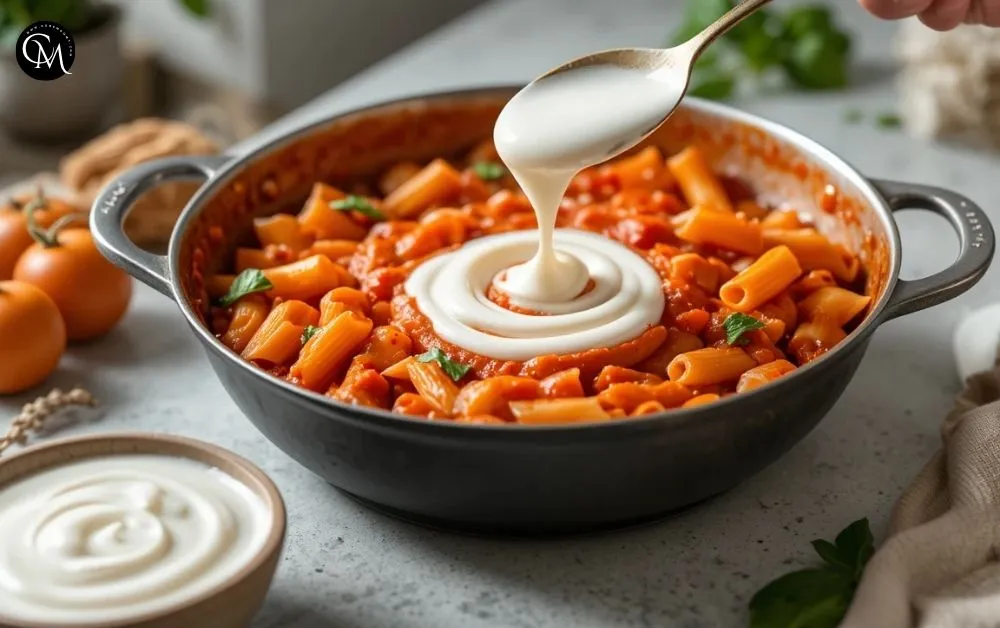
Nutritional Information
One serving (about 250 g bowl of Penne Pomodoro) contains:
- Calories: ~320 kcal
- Protein: 11 g
- Carbohydrates: 54 g
- Fiber: 7 g (higher with whole wheat or legume pasta)
- Fat: 9 g
- Sodium: ~180 mg (varies with canned tomatoes)
For comparison, creamy Alfredo pasta can reach 600+ kcal per serving, making this version nearly half the calories.
Healthier Alternatives for the penne pomodoro
Want to tailor Penne Pomodoro to your dietary needs? Try these variations:
- Low-carb: Swap pasta for zucchini noodles or spaghetti squash.
- High-protein: Use chickpea or lentil pasta.
- Dairy-free: Replace cheese with nutritional yeast.
- Low-sodium: Opt for fresh tomatoes and season with herbs instead of salt.
- Extra fiber: Add leafy greens like spinach or kale, or roasted vegetables such as zucchini or peppers.
Serving Suggestions for the penne pomodoro
This versatile dish pairs well with many sides:
- A crisp green salad with lemon vinaigrette
- Roasted seasonal vegetables
- Whole-grain garlic bread
- Lean proteins such as grilled chicken, shrimp, or tofu
Tip: Balance your plate by serving smaller portions of pasta with plenty of vegetables.
Common Mistakes to Avoid for the penne pomodoro
- Overcooking pasta: It becomes mushy and raises blood sugar levels. Always cook al dente.
- Using too much oil: Stick to measured amounts to keep calories in check.
- Skipping herbs: Fresh basil or parsley brings brightness to the dish.
- Overloading with cheese: Too much can weigh down the recipe. Try lighter alternatives.
- Forgetting pasta water: This simple addition creates a smooth, cohesive sauce.
Storing Tips for the penne pomodoro
- Refrigerate: Store leftovers in an airtight container for up to 3 days.
- Freeze: Freeze the sauce separately for up to 2 months; add fresh pasta when reheating.
- Meal prep: Cook pasta 2 minutes less and drizzle with olive oil before storing to prevent sticking.
Conclusion
Penne Pomodoro proves that pasta can be both delicious and nutritious. With fresh ingredients, thoughtful swaps, and simple techniques, you’ll have a dish that balances comfort and health. Try these eight ways to lighten it up, and share your experience in the comments. Subscribe for more healthy and flavorful recipe ideas!
FAQs
1. Can I use canned tomatoes?
Yes, just choose low-sodium versions. Fresh tomatoes are best when in season.
2. Is Penne Pomodoro vegan?
It can be just skip the cheese or use a plant-based alternative.
3. How do I make it more filling?
Add protein like grilled chicken or choose high-protein pasta.
4. Is it kid-friendly?
Absolutely. Tone down the spice and add a sprinkle of mild cheese for younger eaters.
5. What’s the best way to reheat leftovers?
Warm gently on the stovetop with a splash of water or broth to keep the sauce smooth.
Tried it before ?
There are no reviews yet. Be the first one to write one.

